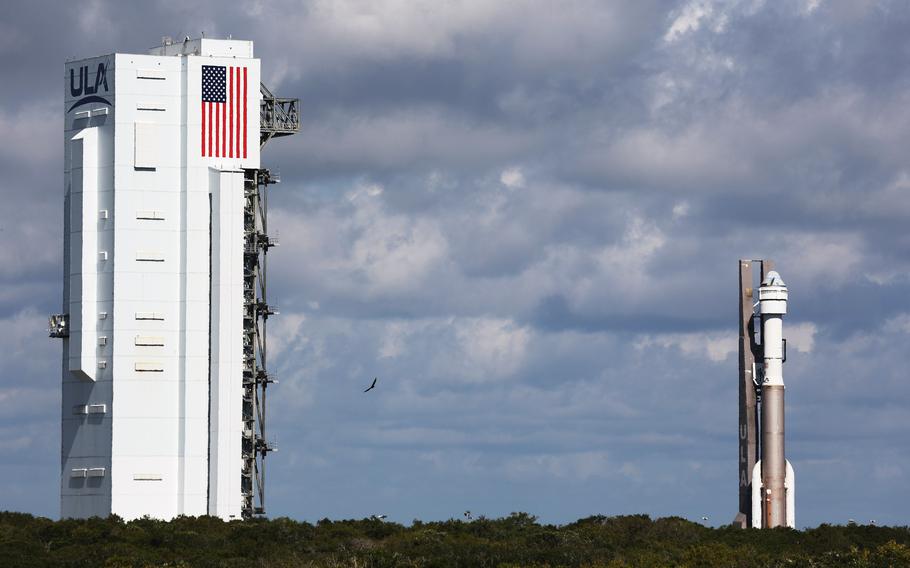
Starliner rolls out of the Vertical Integration Facility at the Cape Canaveral Space Force Station Space Launch Complex 41, on May 4, 2024. (Ricardo Ramirez Buxeda, Orlando Sentinel/TNS)
KENNEDY SPACE CENTER, Fla. (Tribune News Service) — NASA has carved out more time to talk through problems with its attempt to send up astronauts on Boeing’s CST-100 Starliner, which is now targeting June 1 if mission managers give the go for launch.
The new date announced late Wednesday is just a placeholder, though, as NASA has yet to sign off on issues that were found during a launch attempt earlier this month. If NASA does give the OK, the Crew Flight Test mission would aim for a 12:25 p.m. liftoff with backup options on June 2, 5 and 6.
NASA astronauts Butch Wilmore and Suni Williams would climb back on board the Starliner spacecraft sitting atop a United Launch Alliance Atlas V at Cape Canaveral Space Force Station’s Space Launch Complex 41. The goal is to test out the spacecraft flying with humans on board for the first time as it docks with the International Space Station for about an eight-day stay before a return trip to Earth landing in the desert in the western United States.
The pair had suited up and come within two hours of a launch back on May 6, but a fluttering valve on the ULA rocket’s upper stage forced a scrub of the launch attempt with mission managers deciding to roll the rocket back to ULA’s nearby Vertical Integration Facility to replace the valve.
A second issue that was discovered on May 6, but not considered dangerous enough to scrub the launch at the time, has since been the reason for a series of delays of the planned launch date.
The service module that provides the propulsion for Starliner has a small helium leak, sourced to a flange on one of the reaction control system thrusters within one of the four engine compartments.
“Work continues to assess Starliner performance and redundancy following the discovery (of the leak),” NASA said in a press release. “As part of this work, and unrelated to the current leak which remains stable, teams are in the process of completing a follow-on propulsion system assessment to understand potential helium system impacts on some Starliner return scenarios.”
The helium leak as well as the ULA valve issue will be discussed during an upcoming “Delta-Agency Flight Test Readiness Review” among all the launch partners.
“There has been a great deal of exceptional analysis and testing over the last two weeks by the joint NASA, Boeing, and ULA teams to replace the Centaur Self Regulating Valve and troubleshoot the Starliner Service Module helium manifold leak,”
“It has been important that we take our time to understand all the complexities of each issue including the redundant capabilities of the Starliner propulsion system and any implications to our Interim Human Rating Certification,” said NASA Commercial Crew Program manager Steve Stich.
The CFT mission is Boeing’s attempt to join SpaceX’s Crew Dragon as one of two U.S.-based providers for ferry service to and from the International Space Station.
Wilmore and Williams remain in Houston in quarantine working on Starliner simulators, but will fly back to Kennedy Space Center after the flight readiness review if mission managers deem it safe to fly.
“We will launch Butch and Suni on this test mission after the entire community has reviewed the teams progress and flight rationale,” Stich said.
©2024 Orlando Sentinel.
Visit orlandosentinel.com.
Distributed by Tribune Content Agency, LLC.